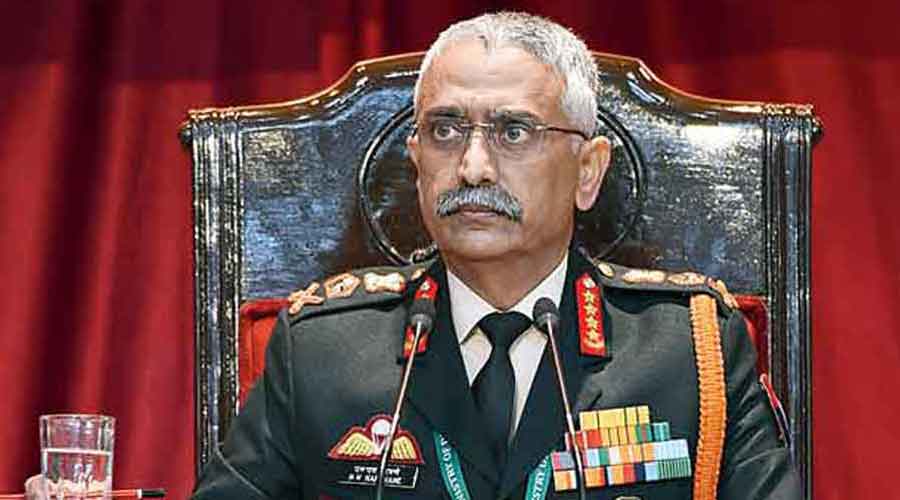The Indian Army chief said on Saturday that the continued Chinese build-up in eastern Ladakh suggested that “they are there to stay”, a day ahead of the 13th round of military talks to resolve the 17-month-long standoff.
Speaking at the Indian Today Conclave in Delhi, General M.M. Naravane said: “It is a matter of concern that the large-scale build-up which had occurred continues to be in place. And to sustain that kind of build-up, there has been an equal amount of infrastructure development on the Chinese side. It means that they are there to stay. We are keeping a close watch on all this development.”
“But if they are there to stay, we are there to stay too. The build-up on our side and the developments on our side are as good as what the PLA has done,” the army chief added. The PLA is the Chinese People’s Liberation Army.
Although the Indian Army has been talking about the massive Chinese deployment in eastern Ladakh and declaring that it is prepared for any eventuality, it has of late been publicly acknowledging a long haul. Last week Naravane had said border incidents would continue until a long-term solution in the form of a boundary agreement was reached.
Gen. Naravane said on Saturday that the Line of Actual Control in eastern Ladakh would become like the Line of Control with Pakistan considering the massive build-up — additional military equipment and troops deployed since last year — by India and China along the frontier.
The Indian and Chinese armies have been locked in a border face-off at multiple points in Ladakh since May last year. The PLA has altered the unmarked LAC at these friction points and as per estimates it has taken over close to 1,000sqkm of India-claimed territory.
The Indian Army chief said on Saturday that if the Chinese soldiers continued to stay put through a second winter, it would “definitely mean that we will be in a kind of LoC situation”. Man and machine of the army are permanently stationed in large numbers along the Pakistan border.
“But it will not be an active LAC as it is there on the western front. We have to keep a close eye on build-up and troop deployment so that they (the PLA) don’t get into any misadventure once again,” Naravane said.
Since last winter, India and China have amassed troops and equipment at altitudes of 14,000ft and above. Each side has deployed 50,000 soldiers along the LAC in Ladakh, backed by artillery, tanks and missile systems.
The sources in the army said disengagement of Chinese troops from Hot Springs and the Depsang Plains would be taken up during Sunday’s corps commander-level talks that would take place on the Chinese side of the Chushul-Moldo border.
A recent intelligence report has suggested that the Chinese army has been rapidly building infrastructure, including roads, bridges and habitats, for its soldiers near the multiple friction points in Ladakh. Besides, China appears to have built at least 10 new airbases along the LAC in Ladakh, Uttarakhand and Arunachal Pradesh and ramped up infrastructure at its existing airbases close to the Indian frontier, sources said.
India, too, has stepped up its border infrastructure development programme, including the building of roads, bridges and tunnels, to counter further Chinese transgressions.
So far, there has been “partial” disengagement from the Galwan Valley, the Pangong Lake and Gogra through the creation of a demilitarised “buffer zone”.
This means the Chinese have stepped back a few kilometres while still remaining within India-claimed lines, and the Indian troops have retreated by an equal distance — a move some veterans have criticised as “ceding more territory” to the Chinese.
The standoff at Hot Springs and the Depsang Plains continue. The Chinese are said to be entrenched 18km inside India-claimed lines at the Depsang Plains.










